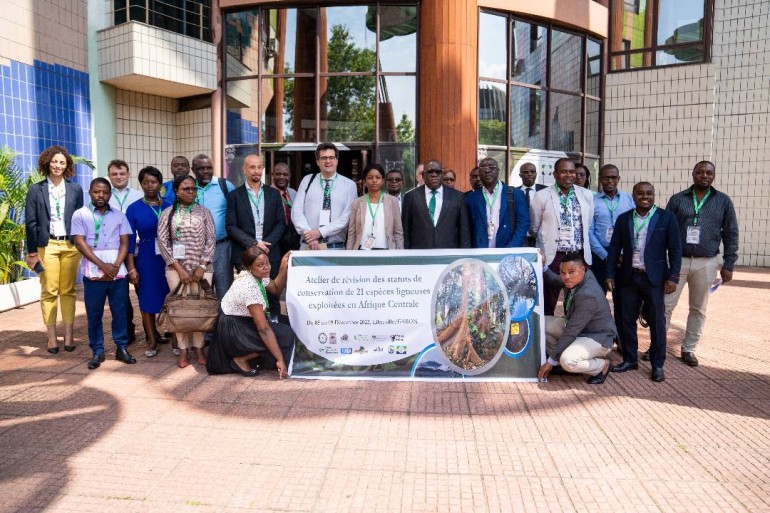

21.12.2022
From 5 to 9 December 2022, a workshop was held in Libreville (Gabon) to validate the IUCN status of nineteen tree species logged in Central Africa. It was organised by the National Parks Agency of Gabon with the support of Nature+, Gembloux Agro-Bio Tech (Liège University) and the Africa & Madagascar Department of the Missouri Botanical Garden (MBG). It is part of the project " Update of the vulnerability status of exploited woody species in Central Africa", financed by the COMIFAC Programme for the Promotion of Certified Logging (PPECF), Gembloux Agro-Bio Tech (Liège University) and the MBG via the Franklinia Foundation.

This workshop brought together some 40 participants representing the national forestry administration, the associative sector, consultancies, research and teaching institutes, the private sector, and the Central African Red List Authority for Plants (CARLA/IUCN) of the IUCN Species Survival Commission (SSC).
The conservation status of each species was established using criterion A3 of the IUCN Red List. The aim was to model the population reduction of the species in 100 years by integrating the impact of logging and habitat loss. The methodology used, presented by Dr Grace J. Loubota (Gembloux Agro-Bio Tech), is based on the analysis of data from 98 forest management units representing about 22 million ha of forest. Additional information (species population density, diameter structure, intensity of threats to the main dispersers, and adequacy of the regular fruiting diameter to the minimum legal logging diameter) was also considered in the analysis of the conservation status of each species
Considering the thresholds of the IUCN red list, for a population reduction between 30 and 50% in the next century, the species is considered as threatened, i.e. the Vulnerable category (VU). Only three species are classified in this category: Entandrophragma candollei (Kosipo), Erythrophleum ivorense (Coastal Forest Tali), Triplochiton scleroxylon (Ayous). These species should be subject to special management measures, e.g. methods to support regeneration.
When the population reduction is less than 30% in the next century, the species is not threatened. Nine species are classified as Near Threatened (NT). These are Bobgunnia fistuloides (Pao rosa), Cylicodiscus gabunensis (Okan), Entandrophragma cylindricum (Sapelli), Erythrophleum suaveolens (Inland Tali), Lophira alata (Azobé), Millettia laurentii (Wengué), Prioria balsamifera (Agba / tola), Terminalia superba (Limba / fraké), Tieghemella africana (Douka). The evolution of their populations should be monitored regularly. Finally, the following species are classified as being of "Least Concern" (LC): Afzelia bipindensis (Doussié), Aucoumea klaineana (Okoumé), Dacryodes igaganga (Igaganga), Entandrophragma utile (Sipo), Milicia excelsa (Iroko), Pterocarpus soyauxii (Padouk), Testulea gabonensis (Izombé).
The next step will be to integrate the comments and recommendations of the experts at the workshop and to submit these assessments for publication on the IUCN Red List website (www.iucnredlist.org).